Table of Contents
Vince Guaraldi and the Christmas Jazz (1928-1976)
Vince Guaraldi – Linus and Lucy (piano solo) Peanuts Theme (sheet music)
O Christmas Tree – O Tannenbaum Trad. German Carol Jazzy arr by VINCE GAURALDI (Noten, sheet music)
Vince Guaraldi

In 1963, producer Lee Mendelson’s professional career was at a crossroads. That same year he had successfully founded his own company, whose first project, a documentary about the figure of the legendary baseball player Willie Mays, had received critical acclaim.
Just a few weeks after NBC’s A Man Named Mays aired, Mendelson was reading the Peanuts comic strip when its protagonist’s umpteenth sports fiasco suggested a most outlandish idea. After making a documentary about what he considered the best baseball player in the world, he decided that the time had come to dedicate another to the worst of them all: Charlie Brown.
From their first appearance in a handful of American newspapers back in 1950, the Peanuts comics had evolved into an internationally significant cultural phenomenon, cementing the growing prestige of their creator, cartoonist Charles M. Schulz.
Knowing his number was in the phone book, Mendelson called Schulz, who invited him to his Sebastopol, California, studio to meet and discuss his proposal. As a great baseball fan, Schulz had seen A Man Named Mays and agreed to a request to shoot a half-hour documentary about his life and work written and directed by Mendelson.
One of Mendelson’s boldest moves was to include a short animated segment. On Schulz’s recommendation, the task fell to the experienced Bill Meléndez, with whom he had collaborated on an ad for the Ford automobile company. That assignment had required him to give the Peanuts characters movement for the first and only time to date, making him the ideal candidate for this role.

On the musical side, Mendelson wanted a jazz-dominated soundtrack, but failed in his attempts to involve Dave Brubeck and Cal Tjader, who claimed other commitments. Just a few days after his refusal, the producer was returning from Schulz’s house when, at the height of the Golden Gate Bridge in San Francisco, he heard an instrumental called Cast Your Fate to the Wind on the radio. According to the program’s announcer, its author was a local pianist named Vince Guaraldi, winner of the Grammy Award for Best Original Jazz Composition for that score.
A Boy Named Charlie Brown had found its composer.
Vincent Anthony Guaraldi was born in San Francisco (California) in 1928. His early interest in music had the unconditional support of his mother, from whom he received his first piano lessons at the age of seven. Already in his adolescence, Guaraldi would expand his training under the baton of the pianist and composer Leonard Auletti.
After graduating from Lincoln High School, Guaraldi served his two-year military service stationed in Korea. Upon his return to the United States in 1949, he attended college at San Francisco State College, but dropped out to concentrate on his career as a jazz musician, born of countless concerts in the city’s clubs.
Throughout the 1950s, Guaraldi would combine live performances in different jazz groups with his participation in dozens of records, either as accompanist or as leader of the band in question.
The Cal Tjader Trio (Fantasy Records, 1953) would mark his studio album debut, while Modern Music from San Francisco (Fantasy Records, 1956) would give him the unprecedented opportunity to record a couple of songs leading his own band, among them Calling Dr. Funk, alluding to his established nickname among the jazz community of the bay.
The album Jazz Impressions of Black Orpheus (Fantasy Records, 1962) would constitute a turning point in his career. Inspired by Black Orpheus (1959), a feature film by Marcel Camus based on the drama by Vinícius de Moraes, the album is essentially a reinterpretation of its soundtrack, composed by Antônio Carlos Jobim and Luiz Bonfá.
However, the most important piece of the album belonged to its B-side, whose first track, an original composition by Guaraldi titled Cast Your Fate to the Wind, would bring with it the definitive recognition of the artist.
Fascinated by the subject, Mendelson turned to the wisdom of San Francisco Chronicle jazz critic Ralph J. Gleason, who put him in touch with the pianist. The producer and musician met at a San Francisco restaurant called Original Joe’s, where Guaraldi confessed his deep admiration for Schulz’s work and accepted Mendelson’s offer to compose the music for A Boy Named Charlie Brown.
Guaraldi’s dedication was absolute. His enthusiasm was evident when, weeks later, the pianist excitedly called Mendelson and insisted on interpreting his latest creation, the iconic Linus and Lucy -in reference to the brothers Linus and Lucy van Pelt-, through the telephone. ‘I have to play this for someone right now, or I’ll explode!’ Were his words. His euphoria was more than justified: Linus and Lucy, considered Peanuts’ signature tune today, is also one of the most popular jazz standards in history.
Merry Christmas, Charlie Brown!
Despite the good work of the team brought together by Mendelson and the expectation generated after the screening of A Boy Named Charlie Brown before the San Francisco Advertising Club, none of this was enough to convince the main television networks and sponsors who, against all odds, rejected The movie.
However, such an unexpected setback did not prevent the release of Guaraldi’s soundtrack, Jazz Impressions of ‘A Boy Named Charlie Brown’ (Fantasy Records, 1964), which enjoyed a better reception.
Dejected, Mendelson had given up all hope of selling his documentary when, a year and a half later, he received a call from John Allen of the McCann-Erickson advertising agency. To his surprise, Allen had no intention of buying the film. Instead, he asked if he and Schulz had discussed shooting a Peanuts Christmas special. The multinational Coca-Cola, one of his clients, had shown interest in financing such a program, but needed a draft at its Atlanta headquarters by Monday. They were on Wednesday.
Mendelson took on the challenge without even consulting Schulz, whom he immediately telephoned. In the meeting that both held the following day, the cartoonist set a whole series of guidelines for the making of the special.
Schulz, of firm religious convictions, wanted the central theme of the film to be the true meaning of Christmas, as well as to present scenes in the snow and ice skating – echoes of his childhood in Minnesota – against a musical background that reconciled jazz, and traditional music. With this approach in mind, they drew up a general outline and sent it to Coca-Cola headquarters.
After three anxious weeks, Allen told them that A Charlie Brown Christmas had received the go-ahead from Coca-Cola on the condition that it be ready for release in early December. As a consequence, they would have a period of about six months to animate a half-hour program. Mendelson, Schulz and Meléndez – now in charge of Bill Melendez Productions – therefore rushed to finalize the details of the story, which did not stray too far from the initial premise.
One of the novelties consisted of the introduction of a tree, suggested by Mendelson as a result of his reading of The Fir Tree, by Hans Christian Andersen, which Schulz incorporated into his script. Once again, Meléndez would be responsible for transferring the aesthetics of the comic to the audiovisual format, a delicate task since he aspired to reproduce, as faithfully as possible, the cartoonist’s peculiar style. Guaraldi would resume his role as composer of the soundtrack with the challenge of harmonizing jazz and Christmas music. As for the cast, it was agreed that all the characters – with the exception of Snoopy, dubbed by Meléndez – would be played by children, a criterion that was extended to the songs.
The montage concluded a week before the premiere. Mendelson then flew to New York to present the special to two CBS executives. At the end of the projection, his disappointment was evident. With its leisurely action, its criticism of Christmas consumerism, its emphasis on the religious background of the holiday and its daring soundtrack, the episode aroused the suspicions of the network, which resigned itself to broadcasting it for the mere fact that it had already been announced in the national magazine TV Guide.
A Charlie Brown Christmas was released on December 9, 1965. Despite the bad omens, the program became the second most watched of that night with an audience of just over fifteen million households -a 45% audience share screen-, second only to Bonanza. CBS retracted its mistake by ordering four new Peanuts specials – with many more to follow – and a few months later, A Charlie Brown Christmas won the Emmy Award for Best Animated Special. A classic was born.
One of the ingredients that elevated A Charlie Brown Christmas to classic status was its unique soundtrack, an unusual mix of instrumentals and songs that converge contemporary West Coast jazz and traditional Christmas music. Given the immense impact that the special had on the American public, there are not a few who affirm that the work of the Vince Guaraldi Trio -with Fred Marshall on double bass, Jerry Granelli on percussion and Guaraldi himself on piano- constituted the initiation to jazz of millions of people.
The special opens with the moving Christmas Time Is Here, a composition with a melancholy air that perfectly captures the contradictory feelings that the celebration arouses in its protagonist, the troubled Charlie Brown. Originally conceived as an instrumental theme, Christmas Time Is Here benefited from the verses of producer Lee Mendelson, author of the lyrics. The song was performed by the St. Paul Church Choir, a children’s choir that had collaborated with Guaraldi on At Grace Cathedral (Fantasy Records, 1965), his recent live album.
To the annoyance of Barry Mineah, director of the group, Mendelson and Guaraldi put the spontaneity of the children before the formal excellence of the choir, which goes out of tune in the closing song, Hark, the Herald Angels Sing, thus gaining in authenticity. His vocals are also heard on My Little Drum, a version of Menino Pequeno da Bateria in which Guaraldi dispenses with the guitar line of the original theme, the result of his association with the Brazilian Bola Sete.
The lively Skating shares the festive spirit of Linus and Lucy, recovered on the occasion of the lively dance of the Peanuts characters in what is perhaps the most evoked scene of the special. Shroeder, a devotee of Beethoven -and in a way a copy of Guaraldi-, interprets a fragment of Für Elise, one of Schulz’s demands for the soundtrack.
The jazz key arrangement of the Christmas carol O Tannenbaum, by the German musician Ernst Anschütz, whose presence in the repertoire is explained by the important role played by the fir tree in the plot, offers a revealing example of the genre’s capacity for reinvention. With the help of Marshall and Granelli, Guaraldi moves from a conventional approach to his referent towards his metamorphosis into a new entity.
But the music of A Charlie Brown Christmas does not end in the special. Preceded by a single with the songs Christmas Time Is Here and What Child Is This, the original album -released by Fantasy Records in 1965- has its own identity and houses gems such as the energetic Christmas Is Coming or the warm and comforting The Christmas Song, not to mention his masterful version of the folk ballad Greensleeves -with the help of double bass player Monty Budgwig and drummer Colin Bailey- or the alternative takes on several of the original songs, which would surface in later years.
Vince Guaraldi passed away in 1976 at the young age of forty-seven. ‘I don’t think I’m a great pianist, but I would like to be able to please people, play nice melodies and reach the public,’ he said in 1958. In 2012, A Charlie Brown Christmas was recognized by the United States Library of Congress for its preservation as one of the most outstanding milestones in the musical history of the country.
Best Sheet Music download from our Library.
Browse in the Library:
| Artist or Composer / Score name | Cover | List of Contents |
|---|---|---|
| Trinity Classical Guitar 2020-2023 INITIAL |
 |
|
| Trinity Classical Guitar Grade 05 2010-2015 |
 |
|
| Trinity Electronic Keyboard Grade 1 Pieces & Technical work |
 |
Trinity Electronic Keyboard Grade 1 |
| Trinity Electronic Keyboard Grade 2 Pieces & Technical work |
 |
Trinity Electronic Keyboard Grade 2 |
| Trinity Electronic Keyboard Grade 6 Pieces & Technical work |
 |
Trinity Electronic Keyboard Grade 6 |
| Trinity Electronic Keyboard Grade 7 Pieces & Technical work |
 |
Trinity Electronic Keyboard Grade 7 |
| Trinity Electronic Keyboard Initial Grade 2019-2022 |
 |
|
| Trinity Electronic Keyboard Initial Pieces and Technical Work 2015-2018 |
 |
|
| Trinity Electronic Keyboard Sample Booklet |
 |
|
| Trinity Guitar 2016 2019 Grade 1 |
 |
|
| Trinity Guitar 2016 2019 Grade 2 |
 |
|
| Trinity Guitar 2016 2019 Grade 3 |
 |
|
| Trinity Guitar 2016 2019 Grade 4 |
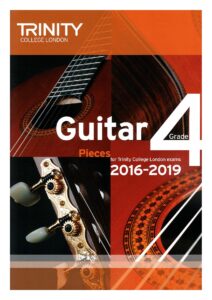 |
|
| Trinity Guitar 2016 2019 Grade 5 |
 |
|
| Trinity Guitar 2016 2019 Grade 6 |
 |
|
| Trinity Guitar 2016 2019 Grade 7 |
 |
|
| Trinity Guitar 2016 2019 Grade 8 |
 |
|
| Trinity Guitar 2016 2019 Initial |
 |
|
| Trinity Guitar Initial to Grade 5 Scales Arpeggios and studies |
 |
|
| Trinity Piano Grade 1 Pieces and exercises 2018 2020 |
 |
Trinity Piano Grade 1 Pieces and exercises 2018 2020 |
| Trinity Piano Grade 2 Pieces and exercises 2018 2020 |
 |
|
| Trinity Piano Grade 3 Pieces and exercises 2018 2020 |
 |
|
| Trinity Piano Grade 5 Pieces and exercises |
 |
|
| Trinity Piano Grade 6 (2021-2023) Extended Edition |
 |
Trinity Piano Grade 6 (2021-2023) Extended Edition |
| Trinity Piano Grade 6 Pieces and exercises |
 |
|
| Trinity Piano Initial Piano 2018-2020 | Trinity Piano Initial Piano 2018-2020 | Trinity Piano Initial Piano 2018-2020 |
| Trinity Piano Pieces And Exercises Grade 1 2015 2017 |
 |
Trinity Piano Pieces And Exercises Grade 1 2015 2017 |
| Trinity Piano Pieces And Exercises Grade 2 2015 2017 |
 |
Trinity Piano Pieces And Exercises Grade 2 2015 2017 |
| Trinity Piano Pieces Grade 1 2021-2023 |
 |
Trinity Piano Pieces Grade 1 2021-2023 |
| Trinity Piano Pieces Grade 2 12 Piano Pieces 2021-2023 |
 |
Trinity Piano Pieces Grade 2 12 Piano Pieces 2021-2023 |
| Trinity Rock and Pop Guitar Grade 8 (Contemporary and classic songs) with Tablature |
 |
Trinity Rock and Pop Guitar Grade 8 (Contemporary and classic songs) |
| Trinity Sight Reading Book 1 Sound at sight Piano |
 |
|
| Trinity Theory Of Music Workbook Grade 1 |
 |
Trinity Theory Of Music Workbook Grade 1 |
| True Silent Hill-2- Akira-Yamaoka |
 |
|
| Truman Show, The Reunion Philip Glass |
 |
|
| Trumpet Method Allen Vizzutti Trumpet Method Book 1 2 3 Complete |
 |
|
| Trumpet Method Anthony Plog Method For Trumpet Complete 7 books |
 |
|
| Trumpet Omnibook For B Flat Instruments Transcribed Exactly From Artist Recorded Solos |
 |
Trumpet Omnibook For B Flat Instruments Transcribed Exactly From Artist Recorded Solos |
| Trumpet Solos, Easy (The Canadian Brass) |
 |
|
| Trumpet, The (John Wallace, Alexander McGrattan) Yale Musical Instruments Series (Book) |
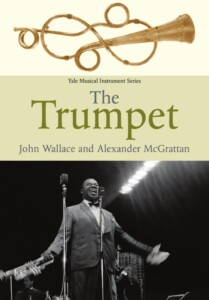 |
|
| Tsim Sha Tsui Stroll (Lust, Caution OST) Alexandre Desplat | ||
| Tu vuo’ fa’ l’Americano (Renato Carosone) | ||
| Tubular Bells (Mike Oldfield) |
 |
|
| Tubular Bells Intro – Mike Oldfield (Musescore File).mscz | ||
| Tuck Andress Europa by Carlos Santana guitar TABs |
 |
|
| Tuck Everlasting (The Musical) Music By Chris Miller Lyrics By Nathan Tysen (Piano Vocal Selections) |
 |
Tuck Everlasting (The Musical) Music By Chris Miller Lyrics By Nathan Tysen (Piano Vocal Selections) |
| Tunes For Ten Fingers A First Piano Book By Pauline Hall (Oxford) |
 |
|
| TV and Movie Themes (Piano, Vocal, Guitar) |
 |
TV and Movie Themes (Piano, Vocal, Guitar) |
| TV Detective Themes For Solo Piano |
 |
TV Detective Themes For Solo Piano |
| TV Fake Book, The |
 |
TV Fake Book, The |
| TV Songs Big Book Of TV Theme Songs 2nd Edition Piano Vocal Guitar |
 |
TV Songs Big Book Of TV Theme Songs 2nd Edition Piano Vocal Guitar Contents |
| Twelve Etudes Op 8 No 12 Scriabin (Musescore File).mscz | ||
| Twenty One Pilots – Goner |
 |
|
| Twenty One Pilots – Heathens – Piano |
 |
|
| Twenty One Pilots – Stressed Out Sheet Music | Twenty One Pilots – Stressed Out Sheet Music | |
| Twenty-Four Italian Songs And Arias Medium High |
 |
Twenty-Four Italian Songs And Arias, Medium High |
| Twice – Knock Knock Piano Solo |
 |
|
| Twilight – The Score – Carter Burwell |
 |
Twilight – The Score – CArter Burwell |
| Twilight saga – New Moon Music Score for Piano Solo Alexandre Desplat |
 |
Twilight.New.Moon.Music.Score.for.Piano.Solo).Alexandre.Desplat |
| Twin Peaks – Audreys Dance Angelo Badalamenti | ||
| Twin Peaks – Laura Palmers Theme Angelo Badalamenti | ||
| Twin Peaks – Twin Peaks Theme Angelo Badalamenti | ||
| Twinkle Twinkle Little Star Variations Suzuki Guitar Vol. 1 (Musescore File).mscz | ||
| Two Socks theme (Dances with Wolves OST) John Barry | ||
| Two Steps From Hell Blackheart Piano Sheet Music by Thomas Bergersen |
 |
|
| Two Steps From Hell Flight Of The Silverbird (Piano Solo) Thomas Bergersen |
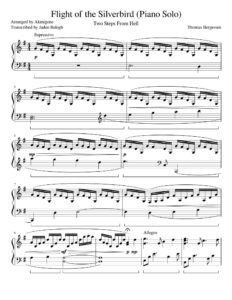 |
|
| Two Steps from Hell Invincible Sheet Music |
 |
|
| Two Steps From Hell Star Sky by Thomas Bergersen |
 |
|
| Txarango – La Dansa Del Vestit En Fa M |
 |
|
| Tymoczko, Prof. Dimitri MUSXI 105 Handouts 1 | Book Theory | |
| Tymoczko, Prof. Dimitri MUSIC 106 Handouts | Book Theory | |
| U2 The Piano Collection |
 |
U2 The Piano Collection |
| U2 – All I Want Is U | ||
| U2 – Best Of – (Guitar Tab Songbook) |
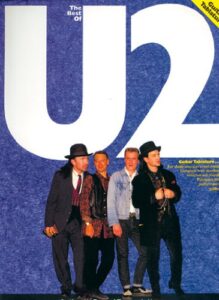 |
U2 – Best Of – (Guitar Tab Songbook) Contents — U2 – Best Of – (Guitar Tab Songbook) |
| U2 – How To Dismantle An Atomic Bomb (guitar tab songbook) |
 |
U2 – How To Dismantle An Atomic Bomb (guitar tab songbook) Contents — U2 – How To Dismantle An Atomic Bomb (guitar tab songbook) |
| U2 – October | ||
| U2 – Stuck In A Moment You Cant Get Out Of | ||
| U2 – The Best of 1990-2000 (Songbook) – U2 sheet music |
 |
U2 – The Best of 1990-2000 (Songbook) – U2 sheet music |
| U2 – The Best Of U2 (recorded versions) Guitar with TABs |
 |
U2 – Best Of – (Guitar Tab Songbook) |
| U2 – The Sweetest Thing | ||
| U2 Rock Score 5 Great Songs |
 |
|
| U2 The Joshua Tree Guitar Songbook with TABs |
 |
U2 The Joshua Tree Guitar Songbook |
| U2 WAR |
 |
U2 WAR |
| UB40 The Best Of – Piano, vocal & Guitar Songbook |
 |
UB40 The Best Of – Piano, vocal & Guitar Songbook |
| Ubi Caritas – Ola Gjeilo (Musescore File).mscz | ||
| Ubi Caritas -Ola Gjeilo-with piano improvisation |
 |
|
| Ukelele Chord Finder – Easy to use Guide |
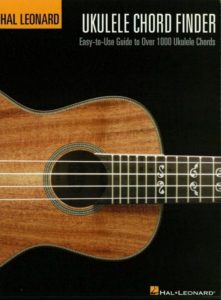 |
|
| Ukrainian folk song.mscz | ||
| Ukulele – 3-Chord Christmas Carols For Ukulele (Guitar Songbook Sheet Music) 30 Holiday Favorites With Just 3 Chords |
 |
Ukulele – 3-Chord Christmas Carols For Ukulele (Guitar Songbook Sheet Music) 30 Holiday Favorites With Just 3 Chords |
| Ukulele – Simple Songs For Ukulele (Guitar Sheet Music) |
 |
Ukulele – Simple Songs For Ukulele (Guitar Sheet Music) |
| Ukulele – The Daily Ukulele (Songbook) – Jim Beloff Guitar Sheet Music |
 |
|
| Ukulele for Kids Songbook Ukulele Method |
 |
|
| Ultimate 80s Songs |
 |
Ultimate 80s Songs |
| Ultimate Guitar Chord-Book |
 |
|
| Ultimate Guitar Songbook with TABs |
 |
Ultimate Guitar Songbook, The (110 songs) |
| Ultimate Latin Piano Riffs – Carlos Campos & Andrew D.Gordon |
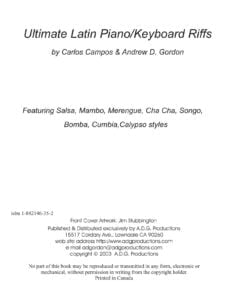 |
Ultimate Latin Piano Riffs – Carlos Campos & Andrew D.Gordon |
| Umberto Tozzi Gloria – Piano Vocal |
 |
|
| Un air de liberté (Et maintenant on va où OST) Khaled Mouzanar | ||
| Un anno d’amore (Mina) | ||
| Un Homme et son Chien (Philippe Rombi) | ||
| Un Monstre À Paris La Seine And I By Vanessa Paradis & Sean Lennon (Piano Vocal) |
 |
|
| Un Monstre à Paris – La Seine And I by Vanessa Paradis & Sean Lennon (Piano vocal).mscz | ||
| Una Mattina (Musescore File).mscz | ||
| Unchained Melody (Sheet Music) – The Righteous Brothers |
 |
|
| Under The Sea Ukulele Guitar From The Little Mermaid |
 |
|
| Under The Sea – Ukulele Guitar.mscz | ||
| Understanding chord progressions for Guitar by Arnie Berle |
 |
Understanding chord progressions for Guitar |
| Understanding The Fundamentals Of Classical Music Course Guide Modern Scholar (Book) |
 |
|
| Undertale Full OST – Toby Fox |
 |
|
| Undertale Megalovania Piano – Toby Fox |
 |
|
| Undertale – Home |
 |
|
| Undertale – Megalovania | ||
| Undertale OST – Hopes and Dreams Save the World |
 |
|
| UNDERTALE OST – Hopes and Dreams Save the World Piano Solo.mscz | ||
| Undertale OST – Hopes and DreamsSave the World.mscz | ||
| Undertale Ost – Nyeh Heh Heh! Bonetrousle |
 |
|
| Une Heure de Plus (Erik Berchot) | ||
| Unfaithful (Rihanna) | ||
| Unfinished Music – Richard Kramer |
 |
|
| Unforgettable – Irving Gordon (Nat King Cole Song) (Musescore File).mscz |
